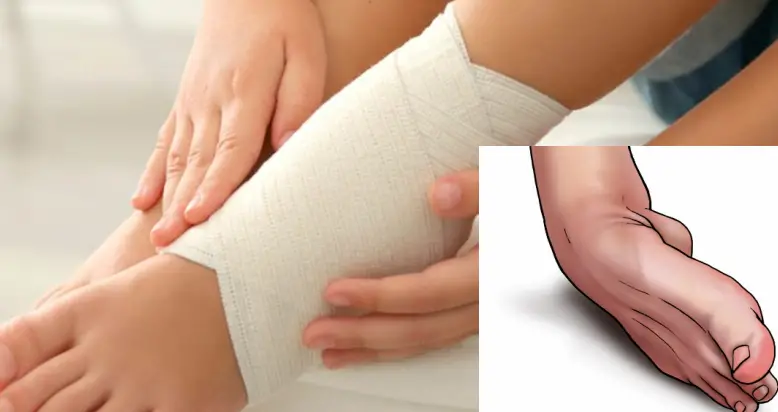How to Cure a Twisted Ankle (6 Methods)
Knowing steps to cure twisted ankle is mandatory, but this also involves comprehending the reasons behind experiencing a twisted ankle. Twisted ankle mostly affects one leg but at times both. A twisted ankle is a result of ligament rupturing or stretching that is connected to the bones and is subjected to overstress.
And it can be caused inwards also known as inversion injury on can be apparent outside as outward twist. Assessing the severity of the ankle injury is helpful and useful in deciding the best ways to cure twisted ankle.
The ankle sprain may fall under any of the three stages mentioned below:
- First stage results in mild pain, slight swelling, bruising, stretched ligaments, some joint instability and trouble in running.
- The second stage ends up with moderate pain, partial ligament rupture, considerable swelling, bruising and difficulty in walking owing to the slight instability of the joint.
- The third stage causes due to complete ligament rupture and results in severe pain, severe swelling, bruising, loss of motion, complete instability making walking nearly impossible.
Contents
Curing a Twisted Ankle
Twisted ankle certainly has a twist and to cure twisted ankle becomes compulsory. However, the time taken to cure depends on the severity of the injury; it usually falling between weeks to few months.
RICE
The RICE method is considered to be an effective treatment.
- R stands for rest that helps in reducing the pain and also in avoiding more injuries.
- I refer to ice that is applied to the affected area to reduce pain and swelling.
- C stands for compression that helps in reducing the swelling.
- E stands for elevation that helps in draining the blood levels from the injured part.
- The severity of the injury indicates the ways to cure twisted ankle.
Medicine
Analgesic medicines such as acetaminophen (Tylenol®, Atasol®) can help in relieving the pain. Anti-inflammatory drugs, such as ibuprofen (Advil, Motrin), are conventionally used in the acute phase (for 2 or 3 days) in addition to compressive and applying ice. They help relieve the pain. However, there is no evidence that they accelerate healing. The inflammatory reaction is part of the process of tissue repair.
People who take anti-inflammatories should pay attention to their effects on the stomach, which can be major (stomach pain, gastrointestinal bleeding, ulcers, etc.). Follow the dosage carefully.
Movements
First make small movements of the foot and ankle, according to your tolerance, without increasing the pain and without putting the weight of the body on your foot. The movements of the ankle that you can do: point the foot, bend the ankle, turn the foot inward and outward without moving the knee. Make these movements knee tight, if possible.
Strengthen
Develop strength of the ankle and foot. In addition, do not forget to stimulate the musculature of the leg, thigh and even the trunk. The body adapts quickly to a modified walking pattern, such as lameness, whether it is caused by pain or weakness.
Stabilize
Stimulate your balance, on one or two feet. First, with your eyes open, then with your eyes closed to increase the level of difficulty. People who think they have an old healed sprain may have a few minutes of physical activity before the stability exercises. Muscle fatigue can sometimes highlight a loss of balance that would otherwise go unnoticed.
Re-educate
When pain is controlled or absent, resume physical activity gradually. Such as stationary cycling, walking or running in the pool, with or without contact with the ground. A physiotherapist can help you rehabilitate or treat a sprain.
Conclusion
Generally, in the case of a minor sprain, the RICE treatment is the most recommended of all procedures to heal the injured ligament. This can be strengthened by doing few exercises of stretching.
People undergoing moderate sprains are recommended to use crutches for few days. Severe strains consume a big time to recover and in between the time to cure twisted ankle causes immobility. However, serious sprains of third-degree may run for weeks and is also cured at rare times by doing a surgery.
The fact is that many surgeons believe that the non-surgery treatment is more effective than the surgical reconstruction of ligaments. However, physiotherapy plays a vital role in restoring movement, improving balance and strengthening muscles, prior to returning to rigorous and routine activities.
People facing sudden ankle twist are more prone to such injuries and such people can avoid by using elastic sleeves that act as inner soles and help in stabilizing the ankle and foot.
It is not a simple task to cure twisted ankle as sometimes a small lump develops in the ligaments of the ankle causing resistance in the joint, thereby causing inflammation as well as permanent damage. Administering a local anesthetic or corticosteroids injection assists in reducing inflammation and offers relief from pain.
Ways of preventing from foot twisting are by wearing proper footwear, performing warming up exercises prior to starting physical activities, keeping stairways clear and avoiding exercising when you are very tired.
The time taken to cure twisted ankle is based on the seriousness of the injury. This time frame may vary from one week to several months. However, do not ignore your pain and visit a doctor prior to initiating any treatment.
Allow the doctor to assess the depth or seriousness of your injury so that you know the stage of treatment required. He will assess it by taking an x-ray or an MRI scan and offer the best advice.


